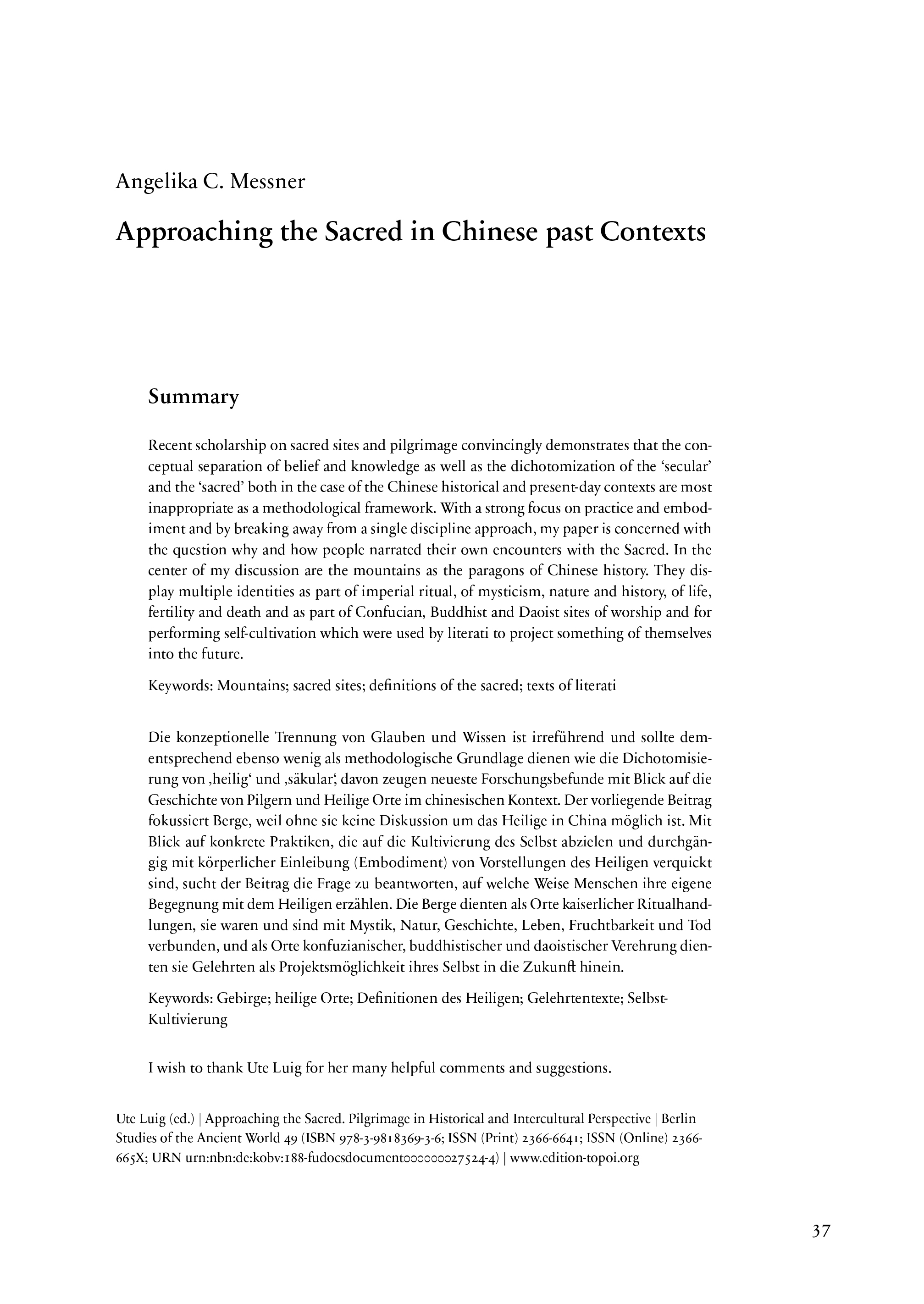Approaching the Sacred in Chinese past Contexts
Recent scholarship on sacred sites and pilgrimage convincingly demonstrates that the conceptual separation of belief and knowledge as well as the dichotomization of the ‘secular’ and the ‘sacred’ both in the case of the Chinese historical and present-day contexts are most inappropriate as a methodological framework. With a strong focus on practice and embodiment and by breaking away from a single discipline approach, my paper is concerned with the question why and how people narrated their own encounters with the Sacred. In the center of my discussion are the mountains as the paragons of Chinese history. They display multiple identities as part of imperial ritual, of mysticism, nature and history, of life, fertility and death and as part of Confucian, Buddhist and Daoist sites of worship and for performing self-cultivation which were used by literati to project something of themselves into the future.
Die konzeptionelle Trennung von Glauben und Wissen ist irreführend und sollte dementsprechend ebenso wenig als methodologische Grundlage dienen wie die Dichotomisierung von heilig und säkular, davon zeugen neueste Forschungsbefunde mit Blick auf die Geschichte von Pilgern und Heilige Orte im chinesischen Kontext. Der vorliegende Beitrag fokussiert Berge, weil ohne sie keine Diskussion um das Heilige in China möglich ist. Mit Blick auf konkrete Praktiken, die auf die Kultivierung des Selbst abzielen und durchgängig mit körperlicher Einleibung (Embodiment) von Vorstellungen des Heiligen verquickt sind, sucht der Beitrag die Frage zu beantworten, auf welche Weise Menschen ihre eigene Begegnung mit dem Heiligen erzählen. Die Berge dienten als Orte kaiserlicher Ritualhandlungen, sie waren und sind mit Mystik, Natur, Geschichte, Leben, Fruchtbarkeit und Tod verbunden, und als Orte konfuzianischer, buddhistischer und daoistischer Verehrung dienten sie Gelehrten als Projektsmöglichkeit ihres Selbst in die Zukunft hinein.

